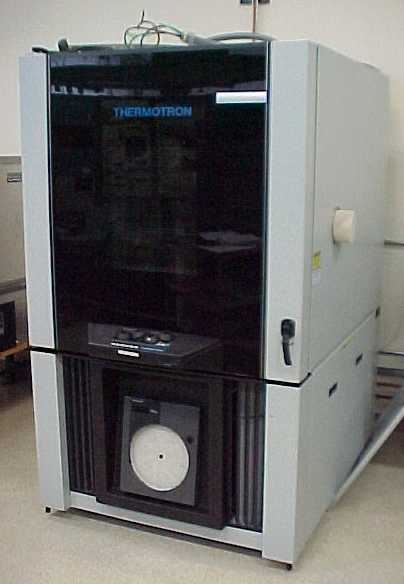Cyclic Moisture Resistance Testing
Cyclic moisture testing evaluates, in an accelerated manner, the resistance of component parts and materials to the deleterious effects of the heat and high humidity, which are typical of tropical environments. Most tropical degradation results from the absorption of moisture by vulnerable insulating materials and from the surface wetting of metals and insulation. These phenomena produce many types of deterioration in the constituent materials, including corrosion of metals and detrimental changes in related electrical properties.
The cyclic moisture resistance test, as performed per MIL-STD-883 test method 1004, differs from the steady-state humidity test. The component humidity test derives added effectiveness in its employment of slow temperature cycling, which provides alternate periods of near-condensation and drying and produces a breathing action of moisture into non-hermetic packages. Cyclic moisture resistance testing also includes low-temperature ‘sub-cycles’ that act as an accelerant to reveal otherwise indiscernible evidence of deterioration, as stresses caused by freezing moisture tend to widen cracks and fissures. The resultant deterioration can then be detected by the measurement of electrical characteristics.
Cyclic moisture testing is typically run for ten 24-hour cycles. Each cycle contains two 8-hour linearly ramped excursions at 90-95% humidity and soak temperatures from 25-65°C and back down to 25°C. Every 65°C soak is 3 hours long and the down-ramp has a relaxed humidity specification of 80-90%. All component humidity testing is monitored for accuracy.
- Test Specifications / Standards
- MIL-STD-202 Method 106
- MIL-STD-810, Method 507
- MIL-STD-883 Method 1004
- MIL-STD-750 Method 1021
- JESD22-A100
- GR-1221-CORE




